We are no longer building saddle trees, but we have two videos about how Western saddles fit horses available on our westernsaddlefit.com website.
Swell Fork Styles A to L
What the Name Means
As we discuss in our main Swell Forks page, the names of the different forks now really apply to the shape only, although originally these names could have stood for a specific stock thickness, gullet height and width. The shapes are stretched or squashed a bit depending on the change in these specifications but we try to keep the fork shape, determined by the top slope, side shape and back shape, as consistent as possible. These are just some examples of the trees we have built. We can work with you to build any fork style you want.
Horn Specifications
All these styles originated with metal horns, but wood post horns on swell forks are becoming more popular all the time. This does affect the gullet thickness and therefore the hand hole and gullet height relationship. (Please see Avoiding the Withers for further explanation.) All the variations in horn specifications are completely independent of the fork style.
Arizona Roper
The back sweep added to this fork with minimal top slope and a straight undercut to the sides makes this a distinctive style fork.
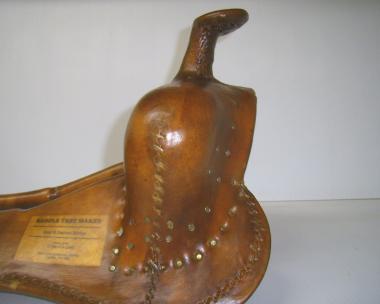 |
 |
| Arizona Roper fork, 3 3/4" stock plus backsweep | Arizona Roper 14" wide 3 3/4" stock plus backsweep |
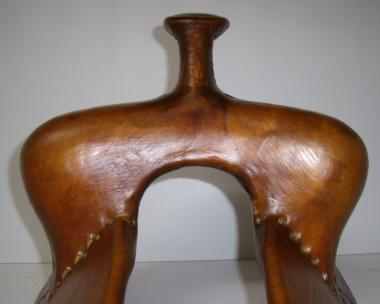 |
 |
| 12" Arizona Roper | 13" Arizona Roper |
 |
 |
| 14" Arizona Roper | 14" Wood Post Arizona Roper |
Bowman
With a very rounded shape due to a moderate slope to the top and minimal and low undercut, this is a fork shape that works well at a smaller width. 12” is most common, but for people who want a lighter weight saddle an 11” Bowman often is chosen. We have made them up to 14" wide. Most are leaned ahead, though we have made a few stood up Bowman forks.
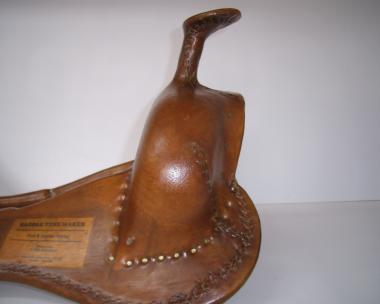 |
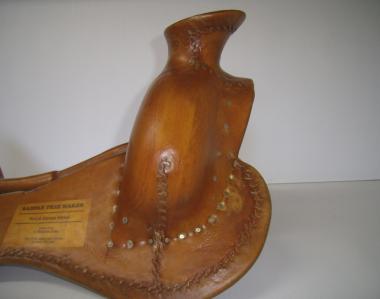 |
| Bowman fork, 3 3/4" stock thickness | Wood Post Bowman fork, 4 1/4" stock thickness |
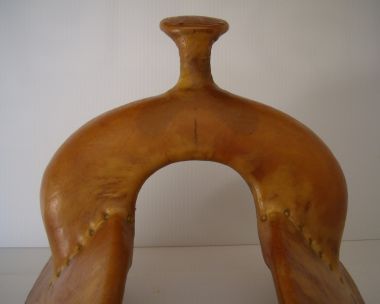 |
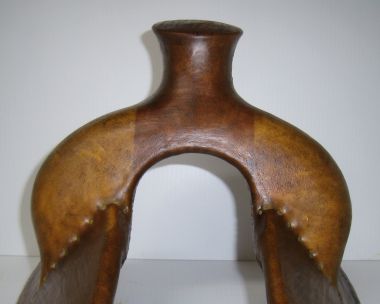 |
| 11" Bowman fork | 11" wood post Bowman fork |
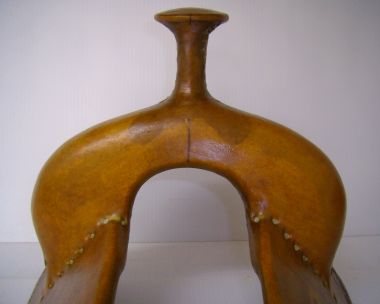 |
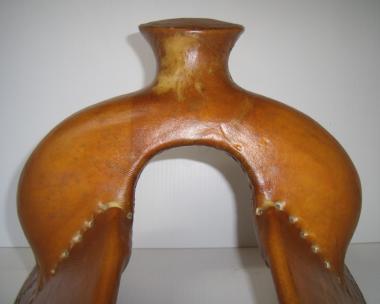 |
| 12" Bowman fork | 12" wood post Bowman fork |
 |
 |
| 12" Bowman fork | 13" wood post Bowman fork |
Buster Welch
The original Buster Welch was a stood up fork, though we have also leaned it ahead when asked. It is rounded all the way down to the bars with no undercut on the side. 13” is the most common width, though we have made them from 11 3/4" to 14" wide.
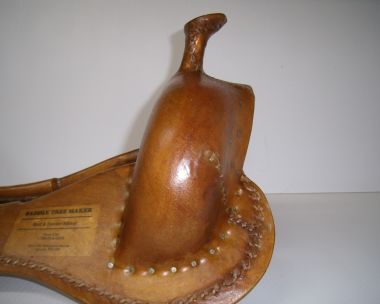 |
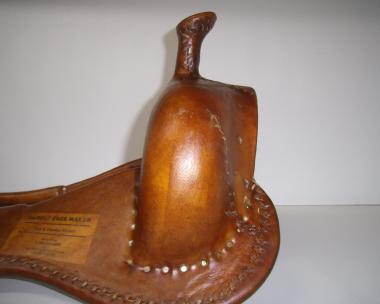 |
| Buster Welch fork, leaned ahead, 3 3/4" stock | Buster Welch fork, stood up, 4" stock thickness |
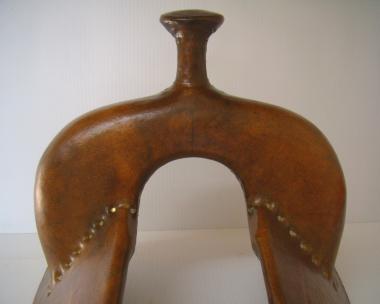 |
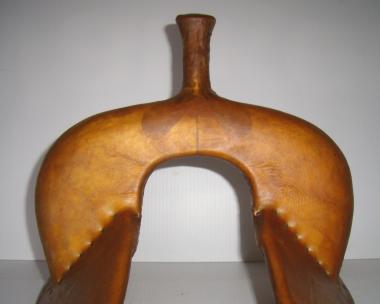 |
| 12" Buster Welch fork | 12 1/2" Buster Welch fork |
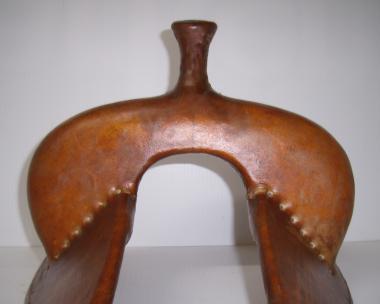 |
 |
| 13" Buster Welch fork | 13 1/2" Buster Welch fork |
Chuck Sheppard
We have also seen this fork style spelled as a Chuck Shepard and Chuck Shepherd, though we believe the original name was spelled Sheppard. We have made Chuck Sheppards from 11” to 13 ½” wide, but due to amount of top slope it has, it is best at narrower widths. 12” is the most common order we get for width.
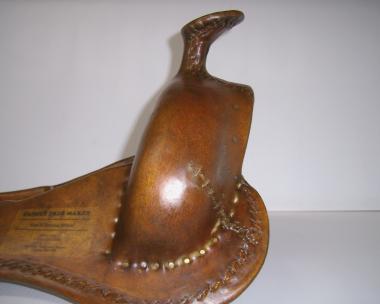 |
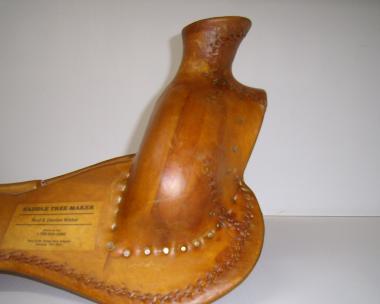 |
| Chuck Sheppard fork, 3 3/4" stock thickness | Wood Post Chuck Sheppard fork, 4 1/4" stock |
 |
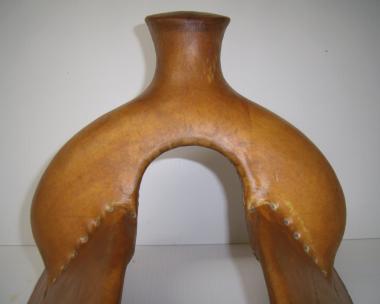 |
| 11" Chuck Sheppard fork | 11" wood post Chuck Sheppard fork |
 |
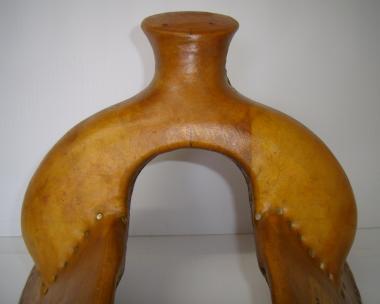 |
| 12" Chuck Sheppard fork | 12" wood post Chuck Sheppard fork |
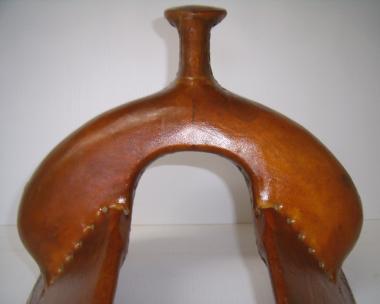 |
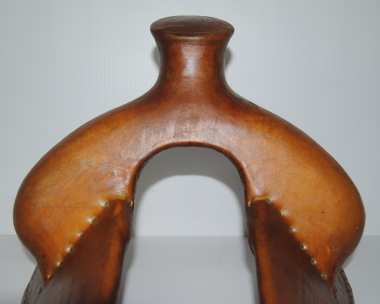 |
| 13" Chuck Sheppard fork | 13" wood post Chuck Sheppard fork |
Dee Pickett
This is another fork style with lots of top slope, slightly more than a Chuck Sheppard, but the undercut comes up the sides more than on a Chuck Sheppard.
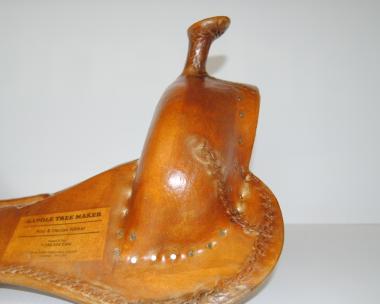 |
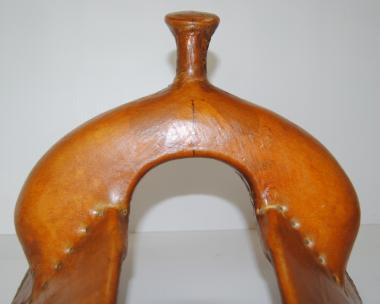 |
| Dee Pickett fork, 3 3/4" stock thickness | 12" Dee Pickett fork |
High Country
The High Country pattern was developed by the late Matt Eberle, a well respected maker of cowboy rigs from High River, Alberta. His original pattern, moderate top slope and no undercut on the sides, was developed so that he could easily cover it without a welt. It was designed to be 12 ½” wide, though even Matt modified that on his orders, and designed to be a stood up fork. We have made them from 11” to 13” wide, with most stood up but the occasional one leaned ahead. A wood post horn on a High Country is a pretty common order.
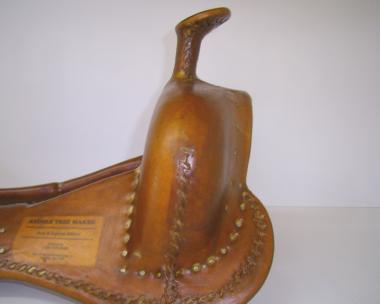 |
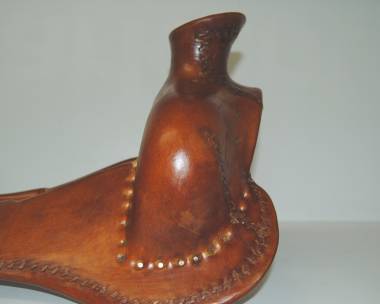 |
| High Country fork, stood up, 3 3/4" stock thickness | Wood Post High Country fork, stood up, 4 1/4" stock |
 |
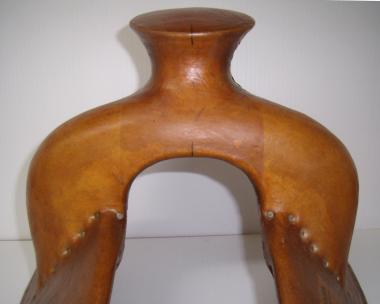 |
| 11" High Country fork | 11" wood post High Country fork |
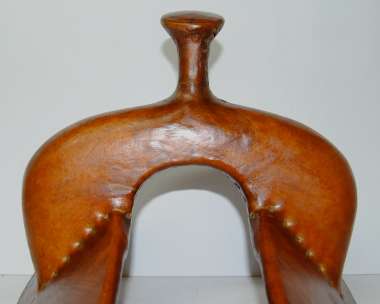 |
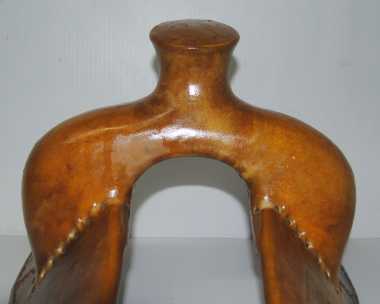 |
| 12" High Country fork | 12" wood post High Country fork |
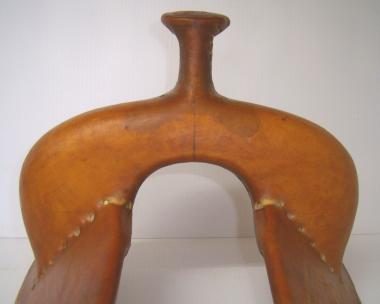 |
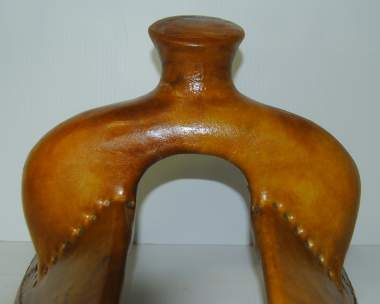 |
| 12 1/2" High Country fork | 12 1/2" wood post High Country fork |
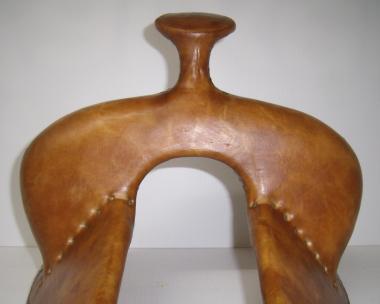 |
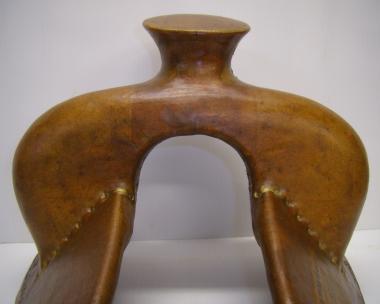 |
| 13" High Country fork | 13" wood post High Country fork |
Louellen
We have also seen this name spelled Lieuallen, Lieullen, and Lieuellen, but we use the Louellen spelling for simplicity’s sake. This fork has the same style of undercut on the sides as the Modified Association, but it has more top slope to it. The most common width we build is 12”, though 13” is not uncommon and we have made them as wide as 14”.
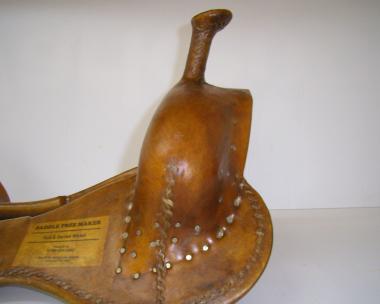 |
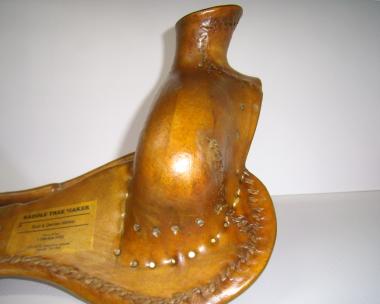 |
| Louellen fork, 3 3/4" stock thickness | Wood Post Louellen fork, 4 1/4" stock thickness |
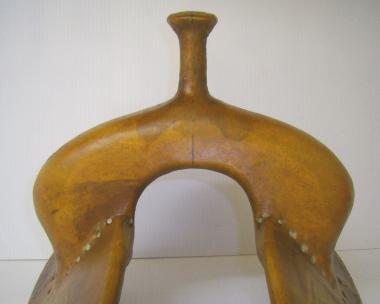 |
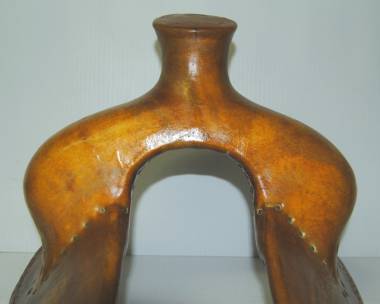 |
| 12" Louellen fork | 12" wood post Louellen fork |
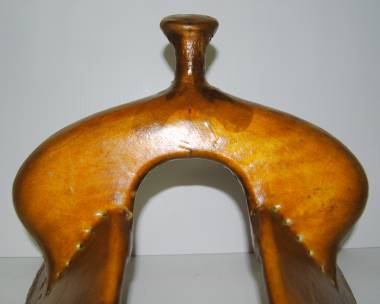 |
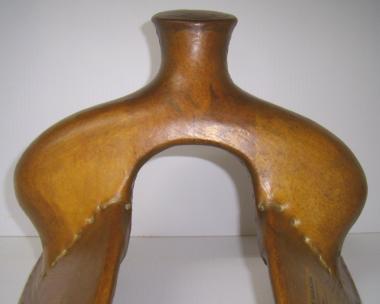 |
| 13" Louellen fork | 13" wood post Louellen fork |
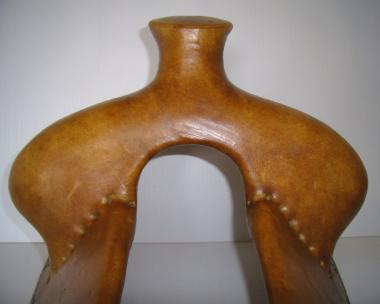 |
|
| 14" wood post Louellen fork |
